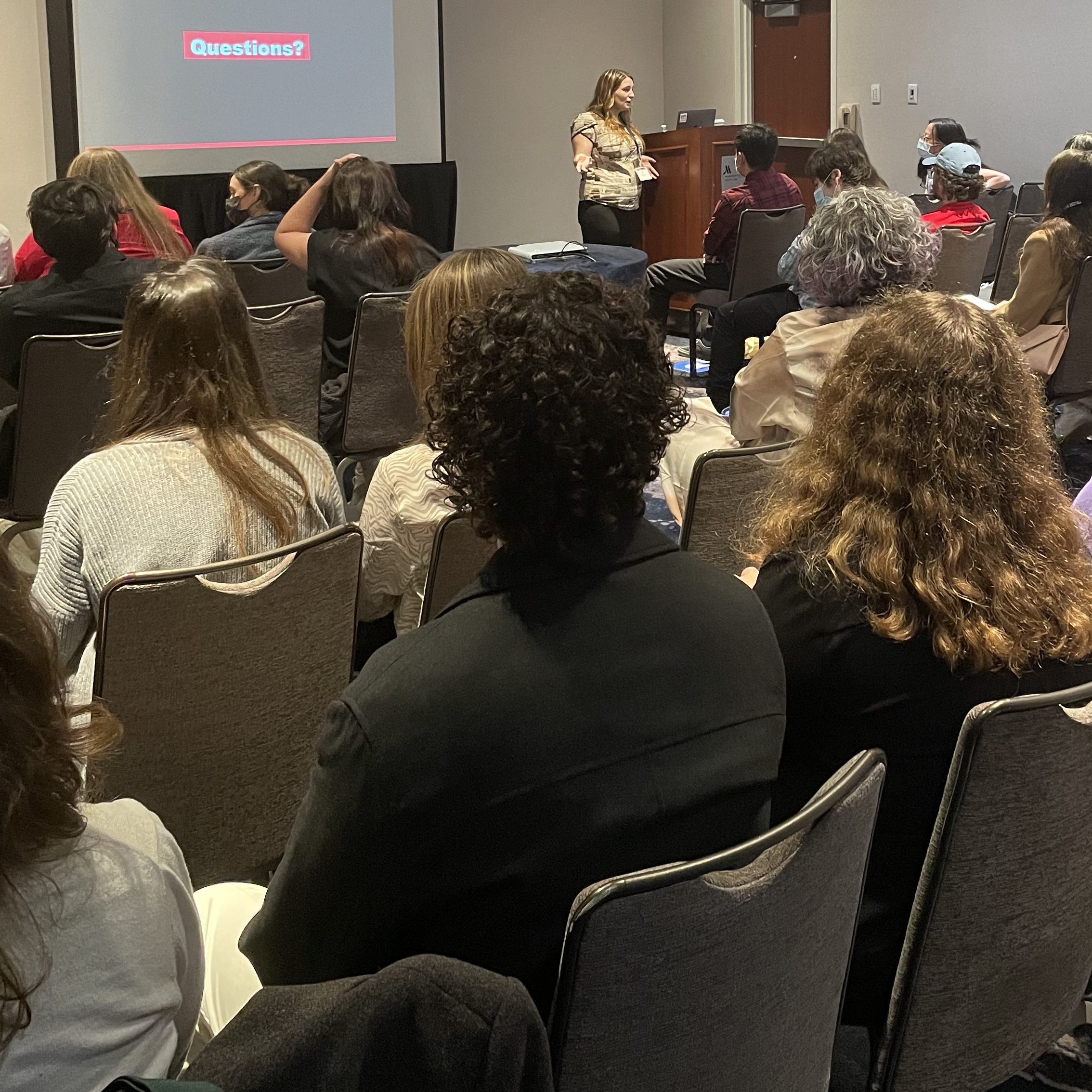How-to talk on avoiding publication lawsuits

FIRE’s Lindsie Rank presents on the subject of publication lawsuits
By Matt Poust
The possibility of being sued for something written in a publication is one of the most detrimental consequences in the field of student journalism. These lawsuits can be filed over matters of libel, defamation, invasion of privacy, and more. Each of these can have the ability to threaten a student journalist’s future credibility, and potentially jeopardize their student news publication.
Because of the ongoing possibilities of these lawsuits, it is crucial that publication members know the solutions to avoid such consequences. Luckily for those attending the CMA convention, members of FIRE (Foundation for Individual Rights in Education) took it upon themselves to suit student journalists with the knowledge of these solutions.
FIRE’s Student Press Counsel, Lindsie Rank gave a presentation covering the subject of publication lawsuits titled ‘Can I Publish This? Conducting a Self-Directed Pre-Publication Review and Keeping Yourself Out of Legal Troubles.’ She discussed the types of publication lawsuits, how they can come about, and tips on how to avoid them.
Rank started initially stating, “although student publication lawsuits do not happen often, it is important to remember there is always a possibility. This presentation is not meant to scare you away from publishing difficult content, but to make you feel confident in publishing that content.”
The “big three” legal liabilities mentioned were: defamation/libel, privacy torts, and intellectual privacy issues. These liabilities can be the result of a false or fact neglected account of the truth, publication of a private fact of the matter, or an intrusion of one’s intellectual property.
Going in-depth about defamation being the most likely result of a lawsuit, Rank explained that although defamation incorporates both libel and slander, the preserved state of a false statement is considered libel in its own sense. This is something a lot of publishers can be misled by, resulting in the frequency that leads to lawsuits.
Jhair Romero, a student journalist and presentation attendee, expressed his pleasure with this shared knowledge on defamation. “I never really thought of preserved speech possibly being considered libel, I’m glad I am aware of the fine line that exists between the two now.” Romero said.
Rank then offered a three-step ‘who, why, what’ list of aspects for students to consider in order to steer away from these legal liabilities. The list touched on: who the individual or group is that is mentioned in the content, why they would possibly be upset with the content, and what they would be able to sue the publication for.
After these three factors are taken into consideration, participants were advised that the writer or editor should also consider how likely that person or group is to follow through with a lawsuit, and if so, how likely they would be to win that lawsuit.
Touching off this lawsuit advice, student journalist Brandon Serrano recalled a time when his publication had a lawsuit scare. “A professor at our university threatened legal action over details published about his actions toward a student on campus. We were confident that what we published was true so instead of taking the defense we waited to see what the professor would do next, but nothing ever ended up happening.” Serrano said.
Rank capped the presentation off with some words of wisdom. “If your gut is telling you something isn’t right about the story then follow your gut. That’s what the feeling is there for. Go back over the information and always double-check.”
Students who missed the informative presentation, but would like to know more can visit FIRE’s website canipublishthis.com which includes the same helpful tips discussed.
